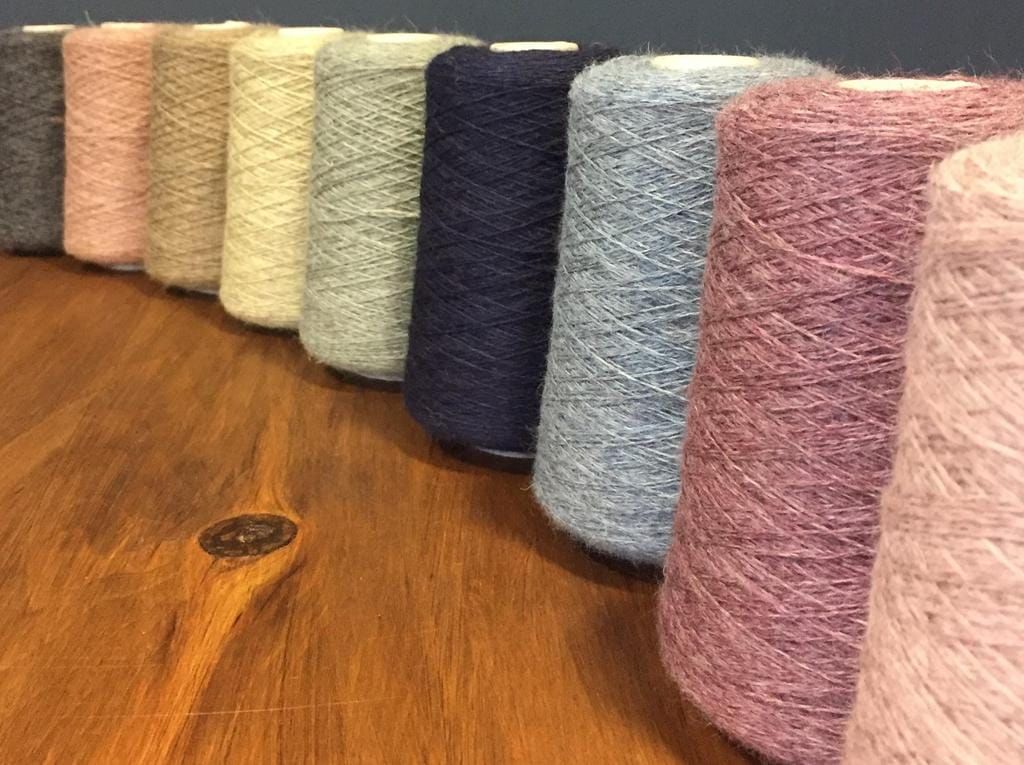Fibre to Fabric Class 6 Notes Science
| Table of contents |

|
| Variety in Fabrics |

|
| Fibre |

|
| Some Plant Fibres |

|
| Spinning Cotton Yarn |

|
| Yarn to Fabric |

|
| History of Clothing Material |

|
Variety in Fabrics
Yarn is defined as a long, twisted and continuous strand composed of interlocked fibres or filaments which are used in knitting and weaving to form cloth.
 Yarn
Yarn
Fabrics are made up of strands called yarns, which are made from even thinner strands, called fibres.
Fibre
Fibres are the materials, which are available in the form of thin, continuous and flexible strands spun into yarn and made into fabrics.
Fabrics are defined as a cloth material made by knitting or weaving or of threads together.
Cotton, silk, wool and jute are called natural fibres as they are obtained from natural sources. We get cotton and jute from plants. We get silk from the cocoons of silkworms.
Synthetic fibres like nylon, polyester and acrylic were invented about a hundred years ago. These are man-made and are not obtained from any plant or animal sources.
Some Plant Fibres
Cotton
- Cotton fibre is obtained from cotton plants that grow in black soil in a warm climate. In India, cotton is grown in Gujarat, Maharashtra, Andhra Pradesh, Punjab, Haryana, Karnataka, Tamil Nadu, Rajasthan, Orissa and Madhya Pradesh.
- The cotton plant bears fruits about the size of a lemon, called cotton bolls. The balls are full of seeds and cotton fibre. They burst open when they are ripe.
- The cotton fibres are collected by hand from the ripe cotton bolls. This process is called picking.
- Next, the cotton fibres are separated from the seeds by combining them. This is known as ginning.
- Earlier, ginning was done by hand, but nowadays, double roller cotton ginning machines are used.
Jute
- Jute fibre comes from jute plants, which are mainly grown in places that have high temperatures and plenty of rainfall.
- Jute is cultivated during the rainy season. In India, jute is cultivated in West Bengal, Bihar, Andhra Pradesh, Uttar Pradesh, Assam, Chhattisgarh and Tripura.
- The jute plant is generally harvested when it is in the flowering stage.
- The stems of jute plants are soaked in water for a few days until they start rotting.
- Then the fibres are separated by hand from the rotting stems.
- Once the fibres have been obtained, they are made into yarn by twisting the strands together. This process of making yarn from fibre is called spinning.
Spinning Cotton Yarn
- The process of making yarn from thin strands of fibres is called spinning.
- It can be done by hand or on a spinning wheel.
- Not just jute, even cotton, silk and other fibres are spun to convert them into yarn.
- Machines are used for spinning yarn on a large scale.
- Fabrics like khadi are made by spinning yarn on hand-operated devices like charkhas and taklis.
Yarn to Fabric
Weaving
- The process of arranging two sets of yarns to produce fabric is called weaving.
- Even coconut fibre can be woven into a fabric called coir.
- Coir is too rough to be made into garments.
- It is mostly used to make doormats, carpets and other flooring material.
- In ancient Egypt, flax and cotton plants were cultivated near the River Nile and were used for making fabric.
Knitting
- Knitting is one of the most popular methods to make fabrics from yarns.
- In this process, a single yarn is used to make a piece of fabric.
- Hand knitting is a conventional method of knitting, though it is also done on machines. For example, sweaters are knitted from wool.
History of Clothing Material
At the beginning of civilisation, people used bark, leaves and animal fur to cover themselves. As people settled down and started farming, they learned to weave vines and animal fleece to make fabrics. In the next stage of civilisation, flax and cotton were woven into garments. In those times, people just draped the fabric to cover themselves. It was only after the invention of the sewing needle that people started stitching their garments. Even today, in older cultures like India, you see people wearing unstitched garments like turbans, saris and dhotis.
|
26 videos|28 docs|9 tests
|
FAQs on Fibre to Fabric Class 6 Notes Science
| 1. What are plant fibres? |  |
| 2. How is cotton yarn spun? |  |
| 3. What is the process of converting yarn into fabric? |  |
| 4. What is the history of clothing materials? |  |
| 5. What are some examples of synthetic fibres? |  |
|
26 videos|28 docs|9 tests
|

|
Explore Courses for Class 5 exam
|

|


















